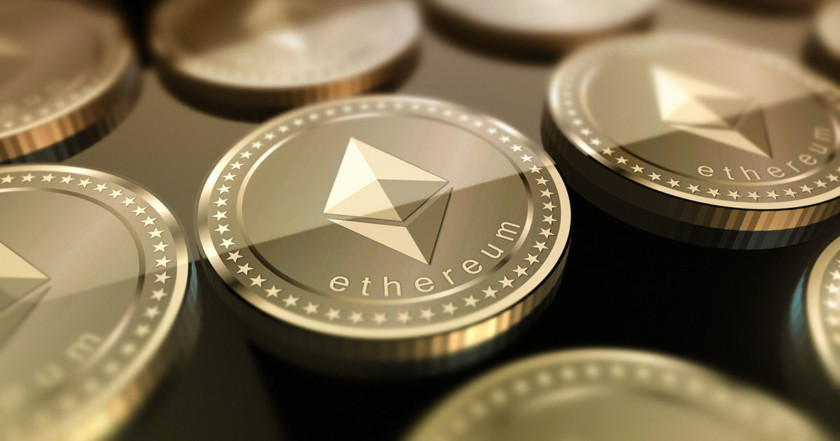#ethereum #crypto
Why Ethereum is the Future of Crypto
Published Mar 3, 2021 by Logan O'Connell

First Things First
Let’s be honest, by this point, everyone and their grandmother has heard of Bitcoin. As they should! Bitcoin has emerged as the new world’s currency, and it’s moving fast. Mayors are looking at it as a store of value for their cities, government regulators are suddenly becoming aware of its benefits, and Coinbase, a highly regarded fiat on-ramp for cryptocurrency, recently revealed that they have nearly 43 million verified users.
Personally, I’m very excited about a future that revolves heavily around cryptocurrency. However, the main reason I am so excited does not pertain specifically to Bitcoin, but more specifically to Ethereum.
Why Ethereum?
If you’d like to know more about Ethereum, there are thousands of resources online that will explain it much better than I could. The main idea I’d like to explore here is the recent explosion of interesting technology using Ethereum smart contracts and the potential for success of Ethereum 2.0.
1.) NFTs
NFTs, or Non-Fungible Tokens, have been blowing up recently. You know a concept has hit mainstream media when Gary Vee begins to talk about it. These tokens are becoming increasingly popular because of how someone can own a digital idea and it can not be recreated thanks to blockchain verification. In February, the Nyan Cat meme created by the original author was sold online as an NFT for around $580,000.
Most of these NFT tokens are created as ERC Ethereum tokens, in order for the Ethereum blockchain to verify that they are real and owned by someone. The idea that works can be original and sold for ever increasing values based upon popularity lends itself very similarly to modern art and music, and that’s where I forsee NFTs excelling. Artists can create beautiful 3D models of art and then auction them off, knowing that there work cannot be reproduced and distributed without losing most of its value. Music has also been on the forefront of NFT adoption, as artists are selling very limited copies of songs that users can listen to themselves through specialized Ethereum wallets.
There is a very specific area of NFTs that I find to be amazing for digital art. On some NFT sites (and it should be all), the original producer of the NFT takes a cut of every sale it is a part of. So if the piece original sells for $700 dollars and their cut is 50%, they recieve $350 for that sale. But, if it is later resold for say $20,000, they would recieve $10,000 of that. This is a feature I think would really change an artists life if a work did blow up, and I hope its adoption grows further.
NFTs have also been used in bleeding edge video games, where people can purchase pieces of land and rare items. These items will belong to them, as referenced by the blockchain, and will hold value. See Decentraland.
2.) Decentralized Finance (DeFi)
DeFi is the concept of moving traditional finance operations, like taking out loans, earning interest, investing, and exchanging currencies onto the blockchain. It is becoming increasing popular and there are many wallet nowadays dedicated to bringing this idea to the masses.
These tokens involving DeFi happen to run almost exclusively on the Ethereum blockchain, giving even more clarity into why I think the cryptocurrency will be so successful.
An example could include the Compound token, which allows people to borrow and lend cryptocurrency with their smart contracts and protocol.
Also, decentralized exchanges have also been booming with business lately. These exchanges have no centralized middle man between the exchange of digital currency. Most deal solely with the exchange of Ethereum tokens. See Uniswap.
4.) Ethereum 2.0
There is one thing that stands in the way of making Ethereum the leader in smart contracts it should be. It has great apps, great developer support, but unfortunately, very high fees. Gas prices have been through the roof lately, and this makes transactions seem absurd when sending smaller amounts of money. From one year ago today it costs 1120% more to initiate a transaction on the Ethereum blockchain.
I know I had personally been looking to enter the ENS space and buy a domain, but with the domain name averaging $5 and the gas prices in the $50-80 range, it was not feasible.
That’s where Ethereum 2.0 (hopefully) comes in.
Currently there is a single Ethereum blockchain, which creates network congestion and leads to very high fees, as well as energy usage. With Ethereum 2.0, the blockchain will be “sharded” into 64 smaller blockchains, allowing transactions to be speedy and cheaper.
In addition, and what I think to be the best part of Ethereum 2.0, is the cryptocurrency is moving from a proof-of-work blockchain to a proof-of-stake. Instead of doing wild mathmatical computations on specialized mining rigs (that absolutely eat up electricity and pollute the world), you simply need to be holding 32 ETH (around $51,000 right now) in a wallet on an Ethereum 2.0 node to begin verifying transactions.
These changes will make the network run much faster, lower the barrier of entry for smaller transactions, and create a much more sustainable blockchain for our Earth.
Ethereum Endgame
In conclusion, I hope you’ve learned a little something! Ethereum is definitely a technology that I am mentally invested in, and I hope it continues to grow and reach its full potential. Decentralize all the things.